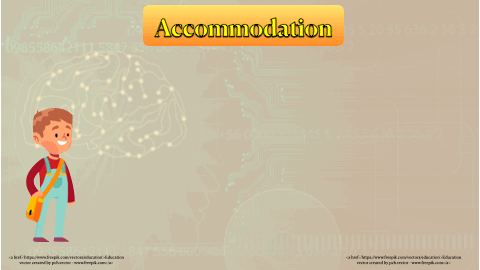
Reflections on Theory and Practice
In Pursuit of Understanding and Practices That Drive the Greatest Impact in Education
The big idea is that Schema is an important concept to understand in regards to how we encode, organize, and retrieve information.
What is Schema?
Put simply schema are webs of interconnected information that we create in our mind. This interconnected information helps us develop patterns of behavior and thinking to understand the world around us.

Assimilation and Accomodation
These two concepts, initially introduced by Piaget, continue to hold relevance in modern learning theory. When encountering a new concept or idea, the learning process involves encoding it as new information or encoding it by linking it to previously acquired knowledge stored in long-term memory. This integration occurs through two fundamental mechanisms: Assimilation and Accommodation.
Assimilation

Assimilation refers to the process by which individuals incorporate new information or experiences into their existing mental schemas.
Put simply, when you are learning a new concept your brain tries to integrate that into schema, that already exists. This is easy. If this works the information is assimilated.
In my example, the cat is black and a little different shape, but the generalization works. So you can successfully assimilate that new animal, the new information to your CAT schema.
Accommodation
Accommodation is the process by which you need to modify or create mental schemas to incorporate new information or experiences that cannot be assimilated easily.
Put simply, when you are learning a new concept but it doesn't generalize well enough and you need to make a new category.
In my example the new animal "barked". It didn’t integrate completely into the “cat schema” so we had to make a new schema for a dog.
Accommodation is harder because you are not generalizing as much, and you need to make whole new categories for learning.


Theory to Practice:
A teaching connection
Assimilation and accommodation can be connected to the popular ideas of Fast (system1) and Slow thinking (system 2)popularized by Daniel Kahneman.
As teachers it is helpful to be aware of both. The brain tries to be as efficient as possible. Understanding that everyone naturally will go for assimilation of information, system 1 thinking first has had vast implications on how I teach. I am not sure which of these is most important, sometimes it changes by the day but I will list the impacts this has on my teaching.
-
Knowing this is a natural aspect of human thinking, I don't get as frustrated when students mentally take the easy way of thinking.
-
It tells me that part of my teaching needs to be directly teaching and modeling how this information should be integrated into what I already have taught, or already know.
-
I have to take the time and manufacture experiences where students are reflecting on their thinking process.
-
I am aware that because accommodation is easier, our brains will often assimilate information into preexisting schema, even if that information doesn't really fit there. This leads to some important teaching implications as well:
-
Direct instruction, modeling thinking, and showing how information directly connects to other information from the beginning will help wrongful assimilation of knowledge.
-
It is much harder to change an already assimilated idea, than to try to encode it correctly in the first place. So taking the time to make sure it is done correctly first, saves a lot more time in the future.
-
Direct instruction and modeling leading to student practice has become much more successful to me in teaching than asking students to help explain things.
-
I am very careful about "discovery learning / inquiry based / exploratory learning" as these instruction models make it much easier for students to assimilate knowledge incorrectly and then build on that incorrect knowledge. (I am not against these models at all. These models can be quite powerful, but take a lot of time, careful scaffolding, and effort to do correctly. It is just much more efficient and less room for error to use direct instruction.)
-
Positives and Negatives of Schema and Learning
Schema is a great system for our brain to use to learn, but we need to be careful because it has some important downsides that are important for use to know as well.

Positives
-
Schemas allow us to assimilate information quickly and automatically, this takes pressure off working memory so it can quickly move on to other information.
-
Schemas can often make it easier for people to learn about the world around them by organizing and grouping new information.
-
People are more likely to pay attention to things that fit in with their current schemas.
Negatives

-
Because new information is harder to encode, people can choose to focus on information they already know rather than important or interesting new information that can help them learn and grow.
-
The organizing and grouping aspects of schema can lead to negative stereotyping.
-
Schemas can also change how we interpret incoming information. When learning new information that does not fit with existing schemas, people can distort or alter the new information to make it fit with what they already know.
-
Schemas can also be remarkably difficult to change. This can lead to a lack of motivation or a lack of self confidence.
-
Schemas can lead educators and parents to misunderstandings about your students or kids learning needs, or can lead to a lack of necessary empathy, support, and scaffolding.
If you want to learn more about Schema:
-
https://teacherofsci.com/schema-theory/
-
https://www.edweek.org/education/opinion-what-is-schema-how-do-we-help-students-build-it/2019/10